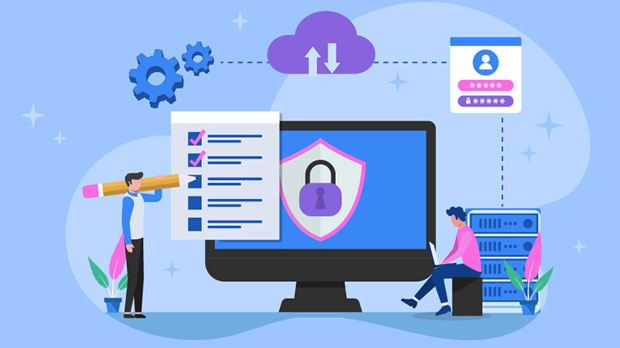In the realm of enterprise-level web scraping and crawling, efficient proxy management is crucial for ensuring both scalability and anonymity. PYPROXY and ProxyProxy are two commonly used solutions in this space, each offering unique features and applications. While both tools provide mechanisms to rotate and manage IPs, their approach, performance, and overall integration into enterprise systems differ significantly. This article will explore these differences, offering a detailed comparison to help businesses select the right tool for their web scraping needs. 1. Introduction to Web Crawling and Proxy ManagementWeb crawling is an essential process for gathering large volumes of data from the web. For businesses, this can include tasks such as market research, competitor analysis, and sentiment analysis. However, scraping websites can lead to several issues, especially when faced with IP blocks and rate limits. This is where proxy management becomes essential. Proxies allow crawlers to mask their IP addresses, enabling anonymous browsing and mitigating the risk of detection or IP bans.Both PyProxy and ProxyProxy are used to manage these proxies in web crawlers. However, they differ significantly in terms of setup, customization, performance, and support for large-scale operations.2. Overview of PyProxyPyProxy is a Python-based proxy rotation solution that offers flexibility and customization for smaller to mid-sized scraping projects. It allows developers to integrate various proxy providers seamlessly, offering an easy-to-use API for managing proxy rotation. PyProxy's design focuses on simplicity and ease of integration, which makes it popular among developers looking to build tailored solutions for specific scraping tasks.One of the key strengths of PyProxy is its lightweight nature. Since it doesn’t require heavy infrastructure or extensive configuration, it is a suitable option for those looking to implement proxy management in smaller-scale or individual scraping projects. Additionally, PyProxy supports multiple proxy types, including HTTP, HTTPS, and SOCKS proxies, making it versatile.However, PyProxy does have its limitations. It is less optimized for enterprise-level applications due to its lack of advanced features like automatic proxy health checks, sophisticated error handling, or integration with cloud-based proxy providers. This means businesses looking for high availability, fault tolerance, and large-scale operations may find PyProxy lacking in comparison to more robust solutions like ProxyProxy.3. Overview of ProxyProxyProxyProxy, on the other hand, is a more robust and enterprise-grade solution. It is specifically designed to handle large-scale web crawling operations, where stability, high availability, and efficiency are critical. ProxyProxy supports a variety of proxy rotation strategies, such as session-based rotation, random rotation, and time-based rotation, ensuring that crawlers can bypass IP bans with minimal effort.A significant advantage of ProxyProxy is its ability to integrate seamlessly with cloud infrastructure. This allows businesses to scale their proxy management solutions quickly and efficiently without having to worry about server capacity or network issues. ProxyProxy also offers automatic proxy health checks, which can help ensure that only working proxies are used, reducing the risk of failures and increasing the reliability of scraping operations.Furthermore, ProxyProxy includes sophisticated features such as advanced error handling, proxy blacklist management, and customizable request headers, which provide more control over the crawling process. These features make ProxyProxy an ideal choice for enterprise-level businesses that need to manage thousands of concurrent requests across multiple regions without compromising performance.4. Performance ComparisonWhen it comes to performance, PyProxy may suffice for small to medium-sized web scraping tasks, where the volume of data and number of IPs involved are relatively low. However, for enterprise-level applications that require thousands of simultaneous requests, ProxyProxy is the more efficient and reliable option. ProxyProxy is designed to handle high traffic volumes without sacrificing speed or efficiency, offering enhanced proxy rotation algorithms that ensure that crawlers are able to avoid detection and maintain consistent performance over long periods.Moreover, ProxyProxy’s integration with cloud-based solutions ensures scalability, enabling businesses to easily add more proxy resources as needed without having to manually configure additional servers or services. In contrast, PyProxy's performance can degrade as the scale of the project increases, especially if the developer lacks the expertise to properly optimize and maintain the solution.5. Ease of Integration and SetupOne of the main reasons PyProxy is preferred by developers working on smaller projects is its ease of setup and integration. It offers a straightforward API and can be implemented quickly with minimal configuration. This makes it ideal for businesses or developers with limited experience in proxy management or web scraping.In contrast, ProxyProxy requires more configuration and setup, particularly when integrating with cloud services and managing large-scale proxy networks. However, this additional complexity comes with the benefit of greater control over the crawling process and the ability to handle much more extensive operations. For businesses that require robust proxy management across multiple teams or regions, the investment in time and resources for setting up ProxyProxy is often justified by its superior performance and capabilities.6. Pricing and LicensingAnother important factor to consider when comparing PyProxy and ProxyProxy is pricing. PyProxy, being an open-source solution, is free to use, making it an attractive option for startups, individual developers, or small businesses. However, users may still need to invest in third-party proxy services, which can increase costs depending on the volume of data being scraped.On the other hand, ProxyProxy typically operates on a subscription-based pricing model, which may be more expensive but includes premium features such as automatic proxy health checks, cloud integration, and advanced error handling. For large enterprises that rely on web scraping as a core part of their business operations, the added cost of ProxyProxy is often outweighed by its advanced capabilities and reliability.7. ConclusionIn conclusion, both PyProxy and ProxyProxy serve distinct purposes in the field of web scraping and proxy management. PyProxy is a great choice for smaller-scale projects where ease of integration and cost-effectiveness are the primary concerns. It is lightweight and flexible but may not scale well for enterprise-level operations. ProxyProxy, on the other hand, is an enterprise-grade solution built to handle large-scale, high-performance web crawling with advanced features, better error handling, and seamless integration with cloud services.Businesses need to assess their specific needs, the scale of their web scraping operations, and the level of control they require over proxy management before making a choice between these two tools. For enterprise-level web scraping tasks that demand high reliability, performance, and scalability, ProxyProxy stands out as the superior option. However, for smaller projects with less complex needs, PyProxy remains a viable and cost-effective solution.
Sep 08, 2025



































































